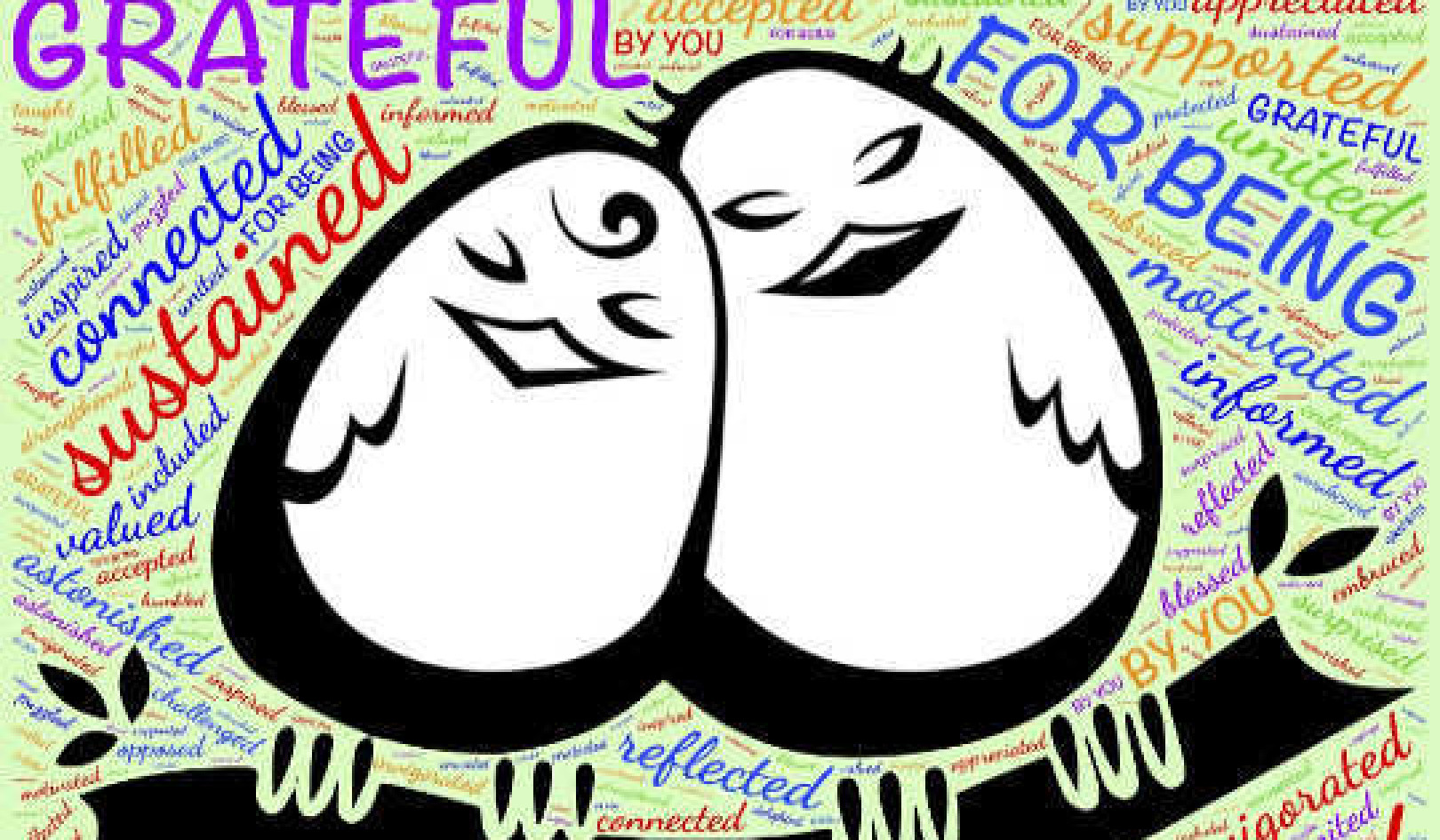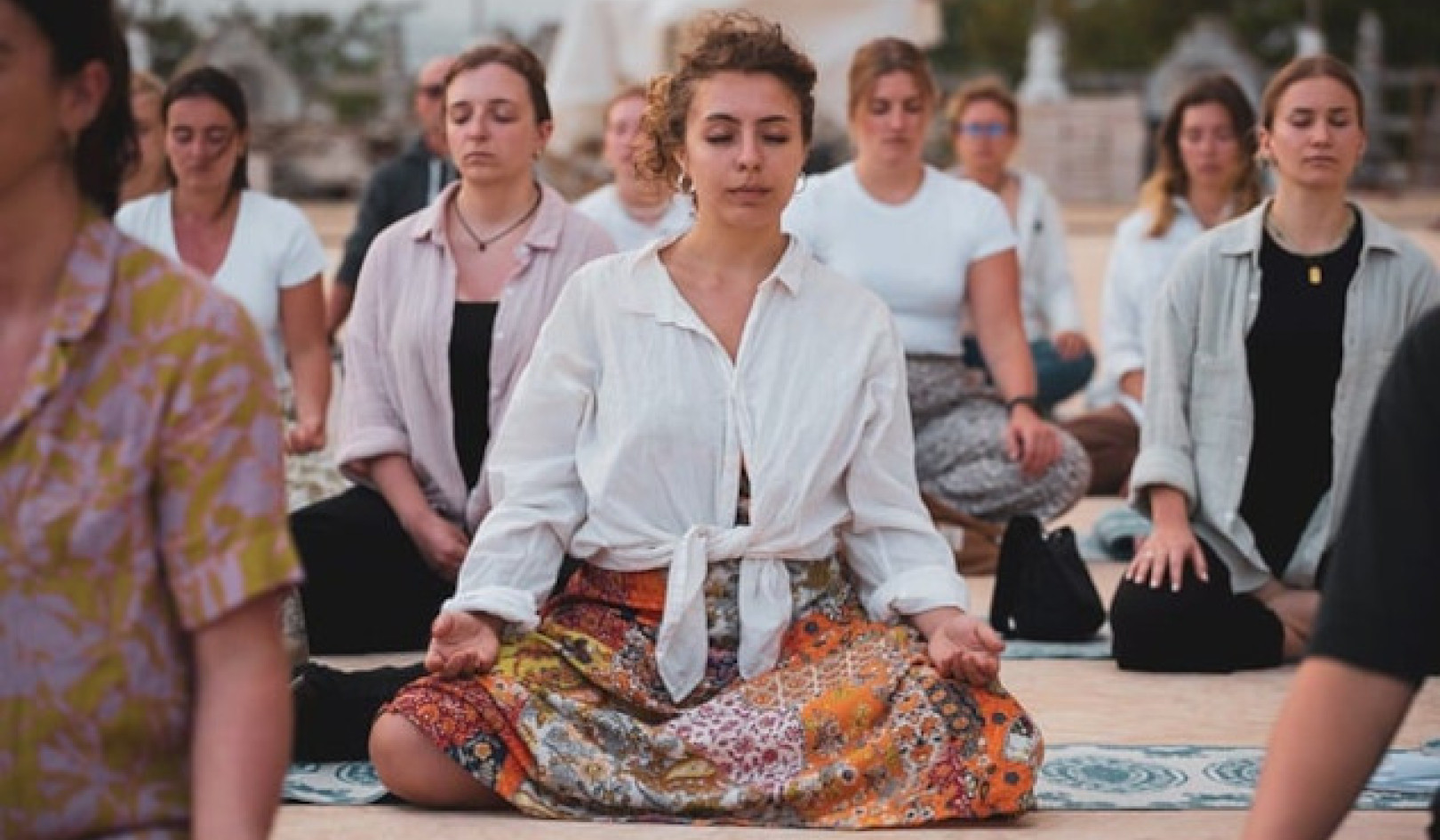
Image by Sasin Tipchai
Without doubt, there is great value in spirituality that emphasizes and supports withdrawal from society. But in our time, with its special needs, we require a spirituality of intense involvement and radical engagement with the world. It is in the real world that people live their busy lives, and it is in the real world that the wisdom of the monks must be made accessible. It is in the real world that awakening and development need to occur, not off in remote solitude.
The type of engagement I have in mind is direct, not abstract. It is a twofold engagement: personal encounter with others and a participation in the experiences, struggles, trials, joys, triumphs, and fears most people in society experience. The daily tasks of earning a living, paying bills, saving money, getting along with others, being entertained, enjoying healthy recreation, and learning how to interact with difficult people are all part of an active life. So they must also be part of life for a monk in the world, at the crossroads of contemporary culture and experience.
Being a Contemplative Resident in a Busy World
When I use the term monk in the world I am referring both to my own situation as a monastic type living in the heart of society and to you, who are or aspire to be a contemplative resident in the same busy world. The traditional monastic understanding that one can be in the world, but not of it can be reformulated as engaged in the world, but free of it, engaged in the world and with others, but not attached to the world's greed, indifference, insensitivity, noise, confusion, pettiness, unease, tension, and irreverence.
Declaring oneself a monk, or mystic, in the world is a way to make the journey easier. By committing to a way of life, or even simply to a name on which we can hang our attention, we formalize our commitment to treating our actions in the world as important. Although we may not all want the structure and tradition of an established path, the formal dedication to becoming a mystic in the world -- even if we keep the identification to ourselves -- can help us immeasurably as we battle with the endless distractions the world serves up to us.
The Monastery Within
Monks and nuns live set apart in a consecrated place. Their monastery exists for three reasons: to provide a supportive environment to seek God in a spirit of daily surrender; to provide an ongoing opportunity for genuine Christian -- or Buddhist, Hindu, or Jain -- love in the practice of acceptance of one another, a place to pursue compassion and selfless love toward each other; and to provide a refuge for people living active lives, those caught up in the distractions of this noisy, confusing, and disordered world. In this last sense, it is a sanctuary for all who arrive at the monastery's gate, a place of peace and calm, where the ways of the world do not follow.
The visitors who stay for a time in the monastic retreat or guesthouse come for many reasons. Some are in search of God and of themselves in God. Perhaps they want the simplicity and focus of the monastery, the sane and balanced rhythm of prayer, work, and study. Perhaps they desire the integrated life of a single place rather than the fragmented existence of contemporary life.
It may be the sacred values and practices of monasticism or the emphasis on the sacredness of life, nature, cosmos, and one another that draws them. Often it is the deep seriousness and commitment to faith and to transcendent reality that calls them for a brief time to come apart and be renewed in spirit by drinking from the living waters of divine wisdom. Sometimes it is to experience a sacred, timeless culture, one that is less mired in the compulsiveness and insensitivity of modern society. Whatever the reason, for the vast majority who come to these peaceful oases, it is for a very brief time -- a weekend, a few days, or a week.
For these seekers, the question becomes how to integrate their glimpse of monastic peace into their everyday lives in the world, how to cultivate contemplation within an active life. To achieve this integration requires the realization that the real monastery exists within them as a dimension of their own consciousness. The important work for all of us in the world is the inner struggle and refinement that goes on in the midst of our daily activities. How do we succeed in dwelling in the cave of our own hearts, in that monastery within? How do we nurture and nourish, inspire and inform, the inner monk that all of us have, and are, as an expression of the mystic in us?
The Outer and Inner Monk
It is the longing of the monk within that calls so many to leave the world for brief retreats. The same call works within both the outer and the inner monk. The outer monk joins the monastery to release the inner monk's mystical life. A monastic is ideally someone who takes the inner monk seriously, and this inner monk is simply the mystic in all of us. Eventually the outer and inner monk become one through prayer, spiritual practice, meditation, or mystical contemplation. All these practices are related to the birth of awareness and to inner attention to the sacred.
The monk in all of us, as cross-cultural thinker Raimon Panikkar observes, "aspires to reach the ultimate goal of life with all his [or her] being by renouncing all that is not necessary to it, i.e., by concentrating on this one single and unique goal." Panikkar speaks of the inner monk as essential to the human, as part of each person. Having an inner monk doesn't require an overtly religious context. It is an innate expression of the mystical quest that everyone can reach by virtue of our common humanity. "The monastic vocation as such precedes the fact of being Christian, or Buddhist, or secular, or Hindu, or even atheist," writes Panikkar.
Why Be A Monk In The World?
Is it possible for the masses of humanity, who do not live in monastic seclusion, to activate the monk within? Are we capable of realizing the mystical life here in the world, in the midst of so much frantic activity? Why be a monk in the world and not in a comfortable monastery? For many years I assumed I would find God sequestered away, and surely one can, but I learned a valuable lesson from my time in India. India taught me the primacy of the mystical quest, the search for the Divine Presence by the wandering ascetic renunciate.
India incorporated this vital dimension of spiritual life early on in its history. It required that the contemplative life, the monk within, be appointed to the last stage in life -- but for everyone, not just for a select few. This was, and remains, the ideal. Although monasteries and other such institutions are useful, they are not necessary for one to make his or her way into this mystery.
Once the inner monk awakens, once the mystic begins to see, an interior freedom is ignited, and the external structures become less important. We will always need them, but they are not where humanity lives. They are places of retreat, renewal, and rest. And most important, they are a countercultural symbol of the spiritual journey we must all make in our own way and at our own pace.
Choosing To Be A Monk In The World
Why do I choose to be a monk in the world and not locked away in a remote hermitage? Because I want to identify with and be identified with all those who suffer alone in the world, who are abandoned, homeless, unwanted, unknown, and unloved. I want to know the insecurity and vulnerability they experience, to forge a solidarity with them. The homeless are often open to the divine mystery through their very vulnerability and anxiety. It is also my desire to be close to you, dear reader, especially if you are struggling. At the same time, while embracing this larger world, I identify with all my brothers and sisters in monasteries, hermitages, and retreat centers everywhere and in every tradition.
The Spirit has called me into the world to live a spirituality of engagement with those who suffer, and that's all of us. This call includes kinship with other species and with nature as a whole within this vast cosmos, which is our real community and certainly the context of our life on this fragile planet. I want to be in the bosom of God in the heart of the world.
St. Francis of Assisi taught me when I was a child the importance of simplicity of life, what the Catholic tradition calls poverty. The economic pressures of modern life have caused most religious orders to lose sight of the true meaning of simplicity. With the exception of Mother Teresa's Missionaries of Charity and the Little Brothers of Jesus, few orders are able to maintain this ideal. Living as a hermit monk in the world, as a contemplative mystic working for a living, like most people, living simply and consciously, I can do the most good for others.
Furthermore, I choose to be a monk living in the midst of the real world, among my brothers and sisters, because I am first of all a contemplative mystic. That is, I am anchored in a deep and growing inner awareness of God's presence, of the Divine's incomparable love for each one of us. Often I feel the Divine One giving itself to me directly, in my relationships with others and in the natural world; it is always a source of inspiration, delight, and even bliss. I experience and so am aware of this Presence in some way, all the time. Often I am overwhelmed by God's love and I feel it inviting me to profound and subtler degrees of surrender, that is, of greater generosity in assenting to God's invitation. My mystical experience is emphatically and inevitably God centered.
Love Itself: The Inner Reality of the Gospel
The primary element in my understanding and practice of spiritual life is the inner reality of the Gospel: love itself. The Gospel calls us to intimacy with the Divine and availability to others; these are really two dimensions of the same reality.
For me, in my experience of being a Christian in these difficult, uncertain, and confusing times, the Gospel has become self-evident in its eternal truth as an ethics of love. I cannot doubt its reality and truth. As an ethics of love, the Gospel contains, I believe, the principle of life itself. This love, which is Divine Love, incarnated in Christ and in us, is referred to as agape, selfless or sacrificial love, pointing to and emphasizing its essential characteristic of unconditional giving. To me, this represents the message of Jesus -- an intensely powerful insight on and invitation to being in the world.
I am convinced that the Gospel represents a high point in humankind's spiritual, moral, and psychological evolution. The example of Jesus repeatedly comes to me in the course of each day. His message to love selflessly is the substance of my world, the radiating light and truth of how I attempt to dwell in this society on this tiny planet we call our home. I am painfully aware, though, of how often I fail.
My desire to be a monk in the world, rather than in a monastery, has much to do with this compelling and challenging teaching of the Gospel. I wish to be near the least, the forgotten and ignored, so I can be a sign of hope and love for them and for all others who need me in some way. It's here I find my anchor in God's love.
... when I was hungry, you gave me something to eat; when I was thirsty, you gave me something to drink. When I was a stranger, you welcomed me. Naked, and you clothed me; sick, and you visited me. I was in prison, and you came to me......as often as you did it to the least of my brethren, you did it to me.
These words from the Gospel of Matthew form the hub of my life as a contemplative monk in the world. The world is the rim, while all that I do in relation to my spiritual life and the various activities I pursue, the experiences I share with all those who also live in this same world, constitute the spokes of the wheel of well-being. I now live and work in Chicago. I find the thriving city an exciting place to meet God and to be a monk in the world. One can be a mystic or monk in the world without departing it.
Reprinted with permission of the publisher,
New World Library, Novato, California. ©2002.
www.newworldlibrary.com
Article Source
A Monk in the World: Finding the Sacred in Daily Life and Cultivating a Spiritual Life
by Wayne Teasdale.
 A Monk in the World tells what the journey has meant for him — living as a monk outside the monastery, integrating teachings from the world's religions with his own Catholic training, combining his vigorous spiritual practice with the necessities of making a living, and pursuing a course of social justice in a major American city. In telling his story, Teasdale shows how others can find their own internal monastery and bring spiritual practice into their busy lives.
A Monk in the World tells what the journey has meant for him — living as a monk outside the monastery, integrating teachings from the world's religions with his own Catholic training, combining his vigorous spiritual practice with the necessities of making a living, and pursuing a course of social justice in a major American city. In telling his story, Teasdale shows how others can find their own internal monastery and bring spiritual practice into their busy lives.
Info/Order this paperback book or purchase the Kindle version.
More books by this Author
About the Author
 Brother Wayne Teasdale (1945 - 2004) was a lay monk who combined the traditions of Christianity and Hinduism in the way of Christian sannyasa. An activist and teacher in building common ground between religions, Brother Wayne served on the board of trustees of the Parliament of the World's Religions. As a member of the Monastic Interreligious Dialogue, he helped draft their Universal Declaration on Nonviolence. He was an adjunct professor at DePaul University, Columbia College, and the Catholic Theological Union, and coordinator of the Bede Griffiths International Trust. He is the author of The Mystic Heart, and A Monk in the World. He held an M.A. in philosophy from St. Joseph College and a Ph.D. in theology from Fordham University. Visit this website for more information on his life and teachings.
Brother Wayne Teasdale (1945 - 2004) was a lay monk who combined the traditions of Christianity and Hinduism in the way of Christian sannyasa. An activist and teacher in building common ground between religions, Brother Wayne served on the board of trustees of the Parliament of the World's Religions. As a member of the Monastic Interreligious Dialogue, he helped draft their Universal Declaration on Nonviolence. He was an adjunct professor at DePaul University, Columbia College, and the Catholic Theological Union, and coordinator of the Bede Griffiths International Trust. He is the author of The Mystic Heart, and A Monk in the World. He held an M.A. in philosophy from St. Joseph College and a Ph.D. in theology from Fordham University. Visit this website for more information on his life and teachings.






























